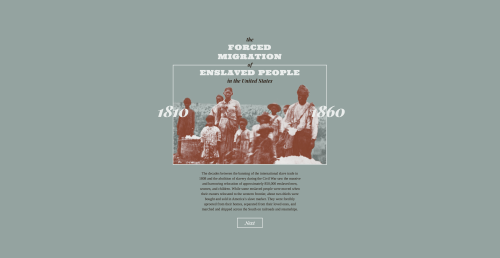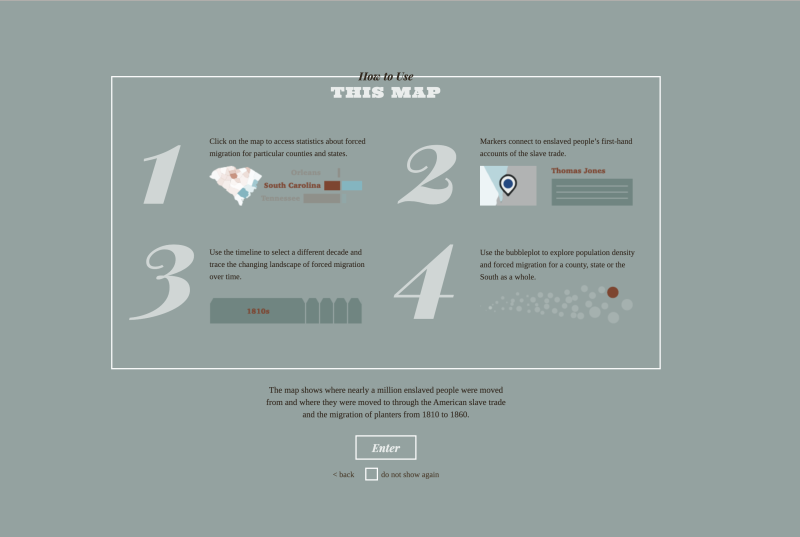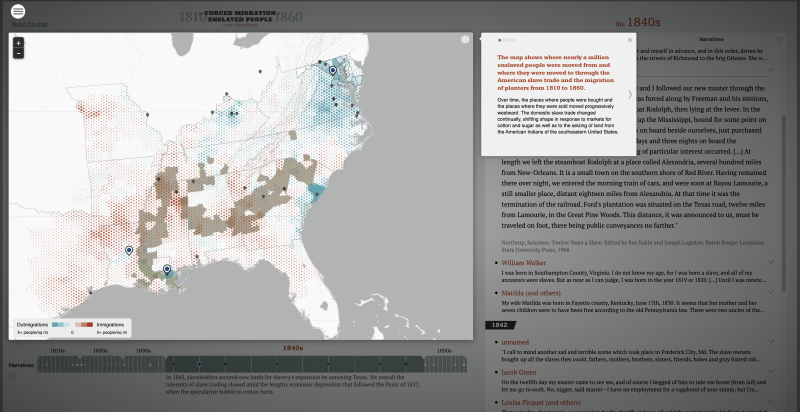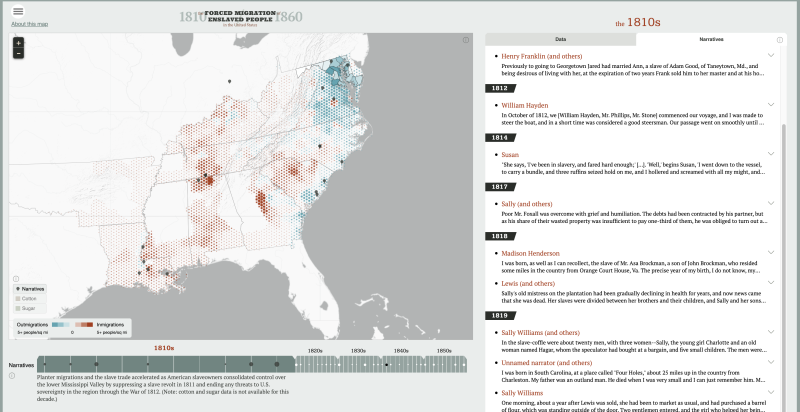This work by New American History is licensed under a Attribution-NonCommercial-ShareAlike 4.0 (CC BY-NC-SA 4.0) International License. Permissions beyond the scope of this license may be available at newamericanhistory.org.
2.2 Departure Zones in Africa and the Slave Trade to the United States, 2.3 Capture and the Impact of the Slave Trade on West African Societies, 2.5 Slave Auctions and the Domestic Slave Trade
Read the brief context statement then select Next.
Analyze the “How To Use This Map” infographic, then select Enter.
Locate the small “i” button in the top right corner of the map.
The “i” button on a digital map provides additional details and context to help you understand the map. This map has 4 “i” buttons – to access these, use the right arrow in the pop-up screen, which will take you to each section of the map.
- Select a state on the map, or the bar graph to explore. What patterns do you see related to the outmigration (blue) and inmigration (copper) of enslaved people in the first decade of the 19th century?
- How do these migration patterns change as you use the Timeline tool at the bottom of the map to navigate each decade? You may click on any state on the map to drill down and explore data at the county level.
- What other patterns or connections do you see as you navigate the map?
- Notice how the Data changes on the bar graph and Bubble Plot as you move through each decade or select different states/locations on the map. What states were most involved in human trafficking during each decade? What economic factors might explain these patterns?
- What does the movement of these people tell us about the connectedness of the slave system across the American South?
Select the Narrative tab in the top right corner of the site next to the Data tab.
In the 1820s, read the entries from abolitionist John Brown. In the 1840s, read excerpts from Solomon Northrup.
Select 2-3 other narratives to compare to these. What new perspectives did you learn from reading these narratives?
Robert K. Nelson, Edward L. Ayers, Justin Madron, and Nathaniel Ayers, “The Forced Migration of Enslaved People,” American Panorama, ed. Robert K. Nelson and Edward L. Ayers, accessed January 12, 2025, https://dsl.richmond.edu/panorama/forcedmigration





